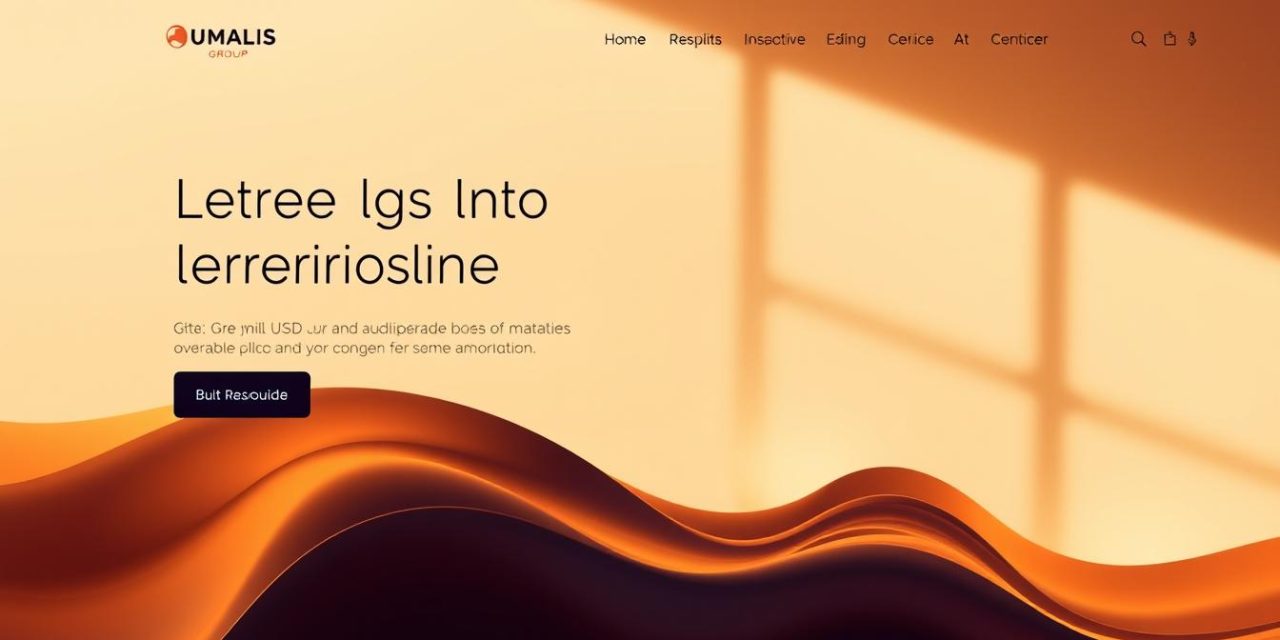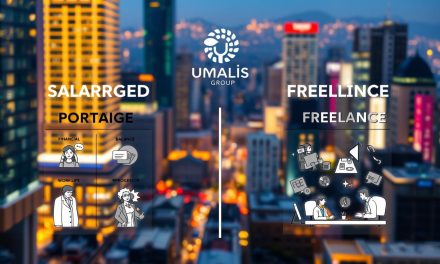I still remember the first time I watched a marketing campaign fall flat. We’d poured hours into ads and emails, but results were scattered. Then I discovered the missing piece: a dedicated space to guide visitors toward meaningful action. It felt like finding guardrails for a winding road.
Imagine your website as a busy storefront. Visitors walk in but leave without buying because they’re overwhelmed. A well-crafted landing page acts like a helpful salesperson, focusing attention on one clear goal. Businesses using 30+ of these pages generate 7x more leads than those with fewer than five.
You don’t need complex tools or endless budgets. What you do need is strategy. These pages eliminate distractions, simplify decisions, and turn casual clicks into measurable outcomes. They work because they respect your audience’s time while aligning with their needs.
Table of Contents
Key Takeaways
- Landing pages increase lead generation by focusing visitor attention
- Businesses with 30+ pages generate 7x more leads than those with fewer than five
- Effective pages combine user psychology with technical optimization
- Single-goal design outperforms multi-purpose website sections
- Professional optimization boosts ROI from existing traffic
This guide will show you how to build pages that feel less like sales pitches and more like trusted guides. Let’s transform how you connect with your audience.
Introduction to Optimized Landing Pages
In digital marketing, precision matters more than ever. A landing page acts as your virtual handshake – the exact spot where visitors land after clicking an ad, email link, or social media post. Unlike general website sections, it’s laser-focused on one goal: turning interest into action.
Think of these pages as decision-making stations. Whether you’re offering a free guide, product demo, or limited-time coupon, they cut through the noise. Visitors get only the information needed to say “yes” – no side menus, competing links, or unrelated content.
| Feature | Landing Page | Website Page |
|---|---|---|
| Primary Purpose | Single conversion goal | General information |
| Design Focus | Minimal distractions | Multiple navigation paths |
| Visitor Intent | Specific offer interest | Exploratory browsing |
Why does this approach work? Your visitors arrive with clear intent. A well-built page matches their expectations instantly. Headlines address their main question, while bullet points highlight benefits. Forms stay simple, asking only what’s necessary.
Companies using 10+ optimized pages see 55% more leads than those with basic sites. The secret? Each page speaks directly to a specific audience segment. A retirement planner’s ebook download page looks different from their webinar signup – and that’s intentional.
Understanding the Role of Landing Pages in Conversion
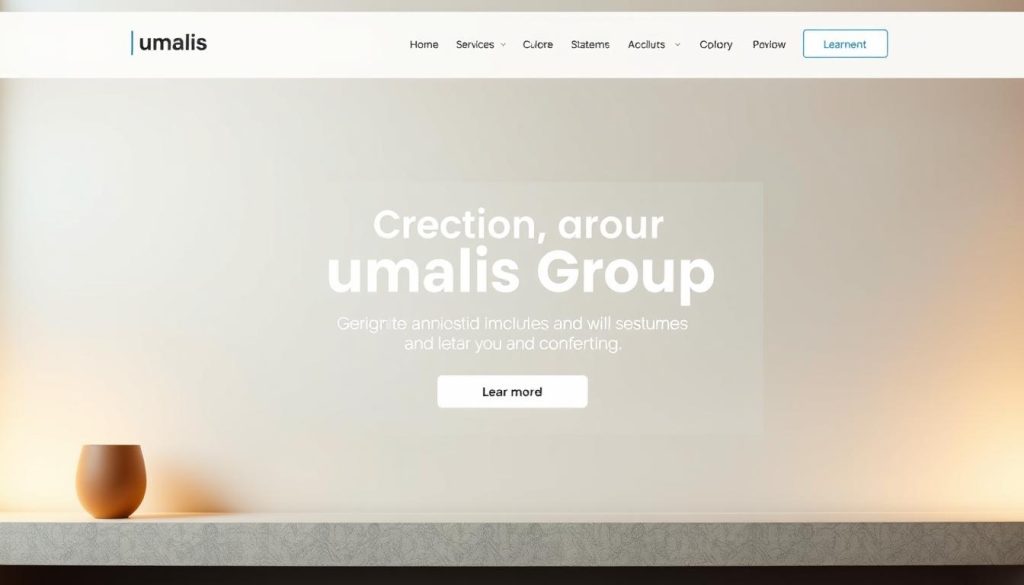
Ever clicked an ad only to feel overwhelmed by options? That’s why conversion-focused destinations exist. These specialized spaces cut through digital noise, turning scattered interest into measurable results. When visitors arrive with clear intent, a well-designed landing page meets them with precision – no detours, no distractions.
Think of these pages as decision accelerators. Unlike general website sections, they present one solution to one problem. Research shows visitors convert 35% faster when faced with simplified choices. Why? Reduced cognitive load lets people act before doubt creeps in.
Strategic design plays a crucial role. Key elements like headlines and forms follow visual hierarchy principles, guiding eyes toward action buttons. Color contrasts and white space work subtly to highlight what matters most. It’s psychology in motion – creating flow without force.
Your marketing funnel gains momentum when each touchpoint aligns. A landing page bridges the gap between curiosity and commitment. For professionals seeking stable client relationships, this focused approach builds trust through clarity. Visitors feel understood, not sold to.
Businesses using targeted pages report 40% higher lead quality. By addressing specific needs upfront, you filter out mismatched prospects. The result? More meaningful connections and lasting professional partnerships.
How to Get Started with Your Landing Pages
Building effective conversion tools begins with clarity. Before drafting your first headline, answer four critical questions:
1. What action should visitors take? Define your primary goal – ebook downloads, consultation bookings, or product trials work best when isolated.
2. Who needs this solution? Create audience personas using data from existing clients or analytics tools. A freelancer targeting corporate clients needs different messaging than someone serving startups.
| Builder Tool | Best For | Key Feature |
|---|---|---|
| HubSpot | CRM integration | Smart content personalization |
| WordPress | Full customization | 500+ plugin options |
| Wix | Quick deployment | Drag-and-drop editor |
Competitor analysis reveals opportunities. Study three industry leaders’ conversion strategies – note their form lengths, value propositions, and visual hierarchies.
When choosing tools, balance speed with flexibility. Beginners often benefit from website builders offering pre-built templates, while agencies might prefer coding from scratch.
Establish success metrics early. Track conversion rates, bounce times, and form completion percentages. Tools like Google Analytics provide actionable insights within 48 hours of launch.
Remember: Great pages evolve. Schedule monthly reviews to test headlines, images, and call-to-action placements. Small tweaks often yield 10-15% performance improvements.
Key Elements of a Great Landing Page
Clarity and persuasion merge in high-performing pages that drive decisions. Your content becomes a silent guide, directing attention through strategic choices in language and layout. Let’s explore the core components that transform interest into action.
Captivating Headline and Concise Copy
Your headline acts as a digital handshake. Research shows visitors decide within 3 seconds whether to stay or leave. Use benefit-focused phrases like “Boost Client Retention” instead of generic statements. Keep sentences under 15 words for quick scanning.
Supporting text should answer one question: “Why choose this?” Eliminate jargon and focus on outcomes. A financial consultant’s page might state: “Secure your freelance income with tax-optimized strategies” rather than “Comprehensive fiscal solutions.”
Effective Layout and Design Elements
Visual hierarchy controls the viewer’s journey. Place your call-to-action button where eyes naturally rest – typically right-aligned below key benefits. Contrast colors increase click-through rates by 35% when used strategically.
- Use white space to prevent cognitive overload
- Align typography with brand personality (serious fonts for legal services, playful styles for creative fields)
- Incorporate directional cues like arrows pointing toward forms
These elements work together to create trust through professional presentation while maintaining focus on conversion goals. Test different layouts monthly to identify what resonates best with your audience.
Crafting a Compelling Unique Value Proposition
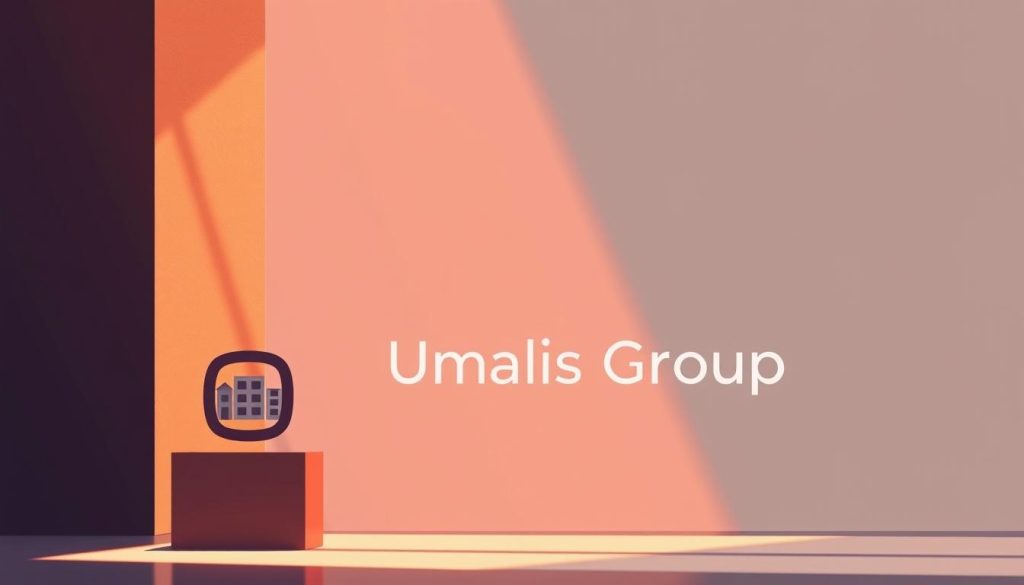
What makes someone choose your solution in seconds? Your value proposition answers this by showing clear benefits over alternatives. It’s not just what you offer – it’s why your product matters to their specific situation.
Start by mapping your audience’s core challenges. A tax consultant’s page might highlight “Reduce freelance tax burdens by 40%” instead of generic accounting claims. This specificity builds trust through relevance.
Effective communication focuses on outcomes, not features. For example:
- “Save 8 hours monthly” beats “Automated invoicing system”
- “Secure project payments upfront” outperforms “Contract management tools”
Place your value statement where eyes land first – typically below the headline. Use contrasting colors or bold fonts to make it stand out. Test different versions to see which phrasing converts best. Pages with refined propositions see 25% higher engagement.
Remember: Your offer competes with countless distractions. A strong value proposition acts as a filter, attracting ideal clients while repelling mismatched leads. Update it quarterly as market needs evolve.
Designing Persuasive Call-to-Action Buttons and Forms
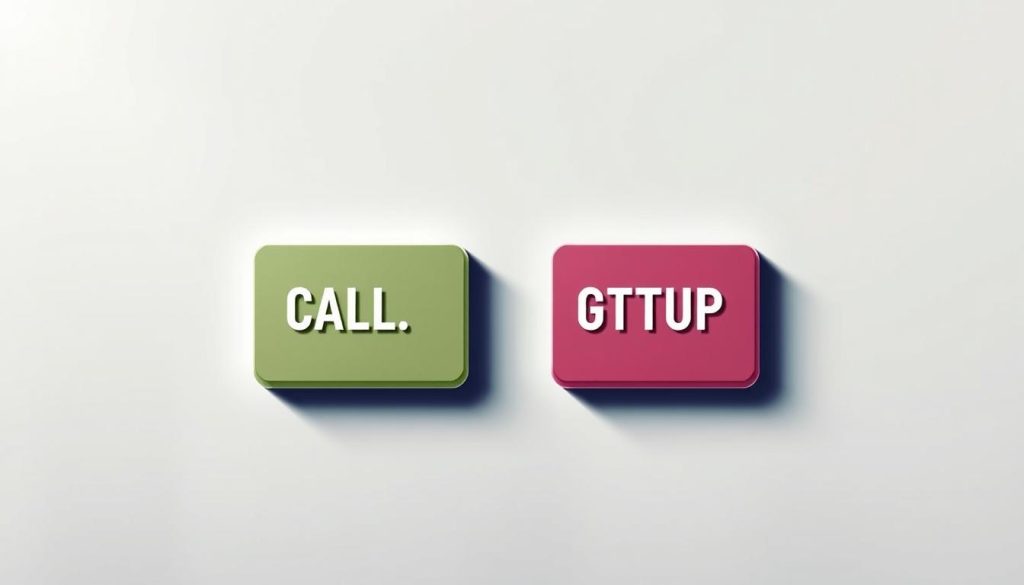
What separates a casual browser from a committed client? The final step they take – or don’t – on your conversion-focused pages. Your CTA button acts as the bridge between interest and action, demanding thoughtful design that aligns with visitor psychology.
Effective buttons use action-oriented verbs like “Claim Your Free Consultation” instead of vague prompts. Color choices matter – red creates urgency, while green suggests safety. Place your primary button where eyes naturally rest after reading key benefits, typically following a value proposition.
Forms require careful balance. Ask only what’s essential: 3-5 fields convert 25% better than longer versions. Professionals seeking streamlined solutions appreciate user-friendly navigation principles applied to data collection. Optional fields? Save them for post-conversion follow-ups.
On lengthy pages, add secondary buttons after major sections. A “Schedule Demo” prompt below pricing details catches visitors at decision points. Test different versions – changing button text from “Download Guide” to “Get My Tax Checklist” boosted conversions by 18% for one accounting firm.
Remember: Your form isn’t an interrogation. Use inline validation to reassure visitors during input. Clear error messages (“Please use a business email”) reduce frustration. Pair this with a visible privacy policy link to build trust in sensitive data handling.
Leveraging Visuals: Images, Videos, and Color
Visual elements act as silent ambassadors for your message. They shape first impressions faster than words can load. A well-chosen hero image sets the tone – whether it’s a product demonstration or interface preview. Research shows pages with strategic visuals convert 86% better than text-heavy alternatives.
Strategic Media Integration
Every image should answer a visitor’s unspoken question: “What’s in it for me?” Product shots work best when showing results, like a tax calculator displaying instant savings. Videos thrive when demonstrating solutions – a 90-second explainer can reduce support inquiries by 40%.
| Visual Type | Best Use | Conversion Lift |
|---|---|---|
| 3D Product Views | E-commerce | 94% |
| Demo Videos | Software Services | 72% |
| Infographics | Data-Heavy Offers | 68% |
The Science of Color Choices
Colors trigger subconscious reactions. Blue builds trust for financial services, while orange creates urgency for limited offers. Align your palette with both brand identity and psychological impact. A/B tests reveal contrasting button colors boost clicks by 35%.
| Color | Emotional Trigger | Common Use |
|---|---|---|
| Navy Blue | Security | Insurance Pages |
| Emerald Green | Growth | Coaching Services |
| Sunset Orange | Action | CTAs |
Consistency matters. Your visuals should feel like natural extensions of your brand, not disjointed decorations. Audit existing images and videos quarterly – outdated stock photos can erode credibility faster than you’d expect.
Optimizing Navigation and User Flow
Have you ever followed a recipe only to realize halfway through you’re missing key ingredients? That’s what poorly structured pages feel like to visitors. Navigation links act as escape hatches – each click risks losing focus on your primary goal. Conversion-focused pages thrive on simplicity, guiding users like a well-marked trail.
Strategic design removes unnecessary choices. A study by Baymard Institute found simplified interfaces increase conversions by 35%. Your visitors arrive with purpose – don’t distract them with header menus or footer links. Every element should serve one mission: moving prospects toward action.
Three principles shape effective user flow:
- Visual hierarchy: Place CTAs where eyes naturally rest after key benefits
- Progressive disclosure: Reveal information as visitors scroll, maintaining engagement
- Friction reduction: Keep forms short and error messages helpful
As UX expert Jared Spool notes:
« Good design guides without shouting. It anticipates needs before users articulate them. »
Analyze heatmaps to understand behavior patterns. Tools like Hotjar show where visitors linger or abandon ship. Pages optimized through this data see 40% longer engagement times. Remove any element that doesn’t directly support your conversion objective.
Your website’s general navigation has its place – just not here. By creating a focused experience, you build trust through clarity. Visitors appreciate the streamlined path, feeling guided rather than manipulated. This approach sets the stage for building credibility through social proof in your next steps.
Building Trust with Social Proof and Testimonials
Trust transforms hesitation into action. When visitors reach your conversion-focused pages, they need reassurance from peers more than polished sales pitches. 93% of marketers confirm video testimonials perform equal to or better than text content. Use this psychological advantage to show real people achieving measurable results through your service.
Customer Testimonials and Reviews
Authentic voices cut through skepticism. A short quote like « This service helped me secure 12 steady clients in 3 months » proves value faster than any claim. Display reviews prominently near call-to-action buttons – 49% of users expect at least four-star ratings before engaging.
Mix formats to address different concerns:
- Case studies for detailed problem-solving stories
- Star ratings for quick credibility checks
- Before/after visuals demonstrating transformations
Our client success stories show how specific testimonials increased conversions by 28% for consulting professionals. Always prioritize recent, specific feedback over generic praise.
Influencer Endorsements and Trust Badges
Third-party validation builds instant credibility. Industry experts mentioning your brand in webinars or articles can lift trust by 40%. Pair these with security badges and certifications to address privacy concerns.
| Social Proof Type | Best Placement | Impact |
|---|---|---|
| Expert Quotes | Below Pricing | +22% Conversions |
| Media Logos | Header Section | +18% Trust |
| SSL Badges | Checkout Area | +35% Form Completions |
Remember: Visitors typically review seven testimonials before committing. Rotate content quarterly to maintain freshness and relevance. Blend emotional stories with hard data to satisfy both logical and instinctive decision-makers.
Effective A/B Testing and Continuous Improvement
Imagine steering a ship through foggy waters. A/B testing acts as your compass, revealing hidden paths to better performance. This method splits your audience between two versions of a page, measuring which elements drive real results. It turns guesswork into strategy.
Testing Variations and Measuring Results
Start by testing one element at a time. Headlines, button colors, or form lengths – small changes create measurable impacts. For instance, switching from « Submit » to « Get My Free Guide » boosted conversions by 18% for a consulting firm.
Focus on data over opinions. Tools like Google Optimize track how visitors interact with each variation. Conversion rates and bounce times tell you what truly resonates. Recent studies show pages tested with professional methods achieve 30% higher click.
Continuous improvement means regular check-ins. Analyze results monthly and adjust based on trends. Test during different seasons – tax professionals might tweak messaging in Q1 versus Q3. Small, consistent updates keep your content aligned with audience needs.
Remember: Testing isn’t about perfection. It’s about progress. Each experiment builds trustworthy data to guide smarter decisions. Pair this approach with your existing strategies for sustainable growth.
FAQ
What makes a landing page convert visitors effectively?
High-converting pages combine clear headlines, focused messaging, and strategic CTAs. They eliminate distractions like excessive navigation links and emphasize your product’s unique value. Tools like Unbounce or Leadpages offer templates optimized for conversion rates.
How do colors impact user behavior on landing pages?
Color psychology directly influences decisions. For example, orange CTAs often boost urgency, while blue builds trust. Always contrast your CTA button against the background – platforms like Canva provide color palette generators to simplify this process.
Should I include videos on my service-focused landing page?
Yes – explainer videos increase engagement by 86% (Wistia data). Keep them under 90 seconds and place them above the fold. Embed platforms like Vimeo or YouTube seamlessly while maintaining fast load times.
How many form fields should my lead capture page include?
Balance information needs with conversion goals. HubSpot research shows 3-5 fields optimize conversions. For free trial offers, limit to email and name. Use conditional logic tools like Typeform to progressively gather details.
What’s the best way to showcase customer testimonials?
Feature authentic quotes with names/companies, or embed Trustpilot reviews. Video testimonals perform particularly well – encourage clients to share specific results from using your product or service.
How often should I update my Google Ads landing pages?
Run A/B tests monthly using Google Optimize. Test one element at a time – headlines, images, or CTA placement. Winning variations typically see 5-10% conversion lifts according to WordStream benchmarks.

